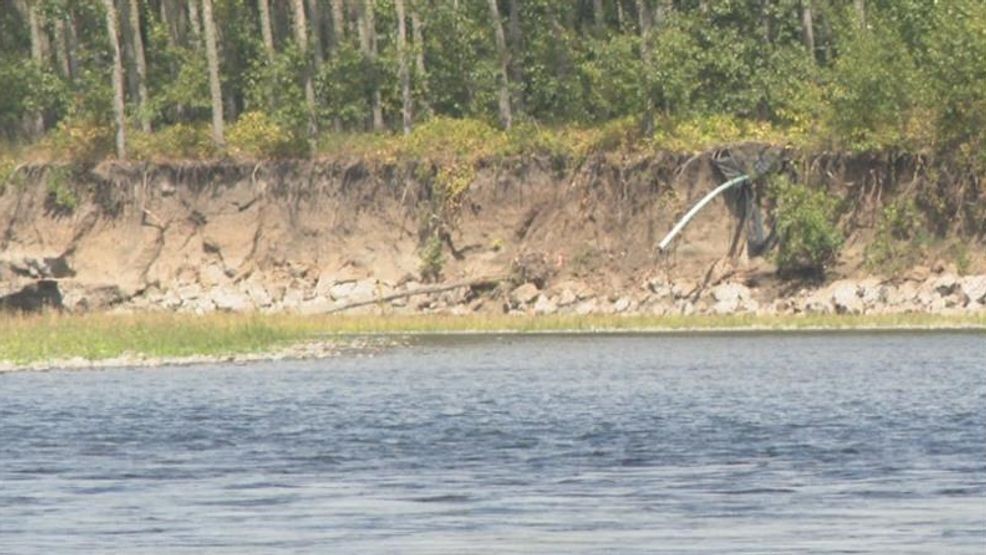HARRISBURG, Ore. — Harrisburg’s waste water treatment site is running into problems with erosion along its Willamette River bank threatening the trees that clean up the sewage.
Along Peoria Road, the city treats its waste water, and one of the biggest players in the process is its poplar trees which collect effluent or liquid sewage.
The roughly 1900 trees receive the waste through piping stopping it from going into the river, but a recent increase in erosion is taking the trees into the river quicker.
“We’ve lost our boat ramp, and we’ve been sounding the alarm, hey we’re losing riverbank, we’re losing riverbank, and not much reaction,” said Harrisburg Mayor Bobby Duncan. “We’re inching ever closer, we’re losing a quarter acre a year of land. It’s a tremendous amount, we use trees that were used for the, we spray the effluent on in the summer and then we have to replant those trees on the other side of the property.”
A more distant concern for the 200 acre site is its lower waste water lagoon that’s about 670 feet away from the river.
The city says installing a silt fence is required by the Oregon State Marine Board and Department of Fish and Wildlife to protect the habitat’s salmon while preventing erosion, but attempts to secure the fence failed.
Now the city needs $230,000 to create an engineering plan to anchor the fence.
“That permit is actually still open. We still have permission to do that. However, we cannot afford the engineering, we cannot afford going in and trying to put a silt fence in that,” said Michelle Eldridge, Harrisburg city administrator. “And that of course is going to affect us down on the river bank that we have that’s up north and that’s an even more powerful current right now. So that’s one of the reasons why we’re losing so much of that bank.”
The city says it has been in communication with the Department of State Lands, the Army Corps of Engineers, and the Department of Environmental Quality, but next steps aren’t clear.
“We’ve had meetings. Upon meetings, upon meetings, upon meetings. And you get the okay from one regulatory commission, and then another regulatory commission comes in and says no, you can’t do that. I just wish they would hear us. And like I said earlier, my guess is there’s many small town mayors, small town city counselors that have the same desire to be heard,” said Mayor Duncan.
While the trees are in immediate danger to erosion, the city says a feasibility study needs to be done to know how fast it will threaten the lower lagoon.
We’ve reached out to the Army Corps of Engineers to discuss permitting for the city, but we’ve not yet spoken with someone on the issue.
